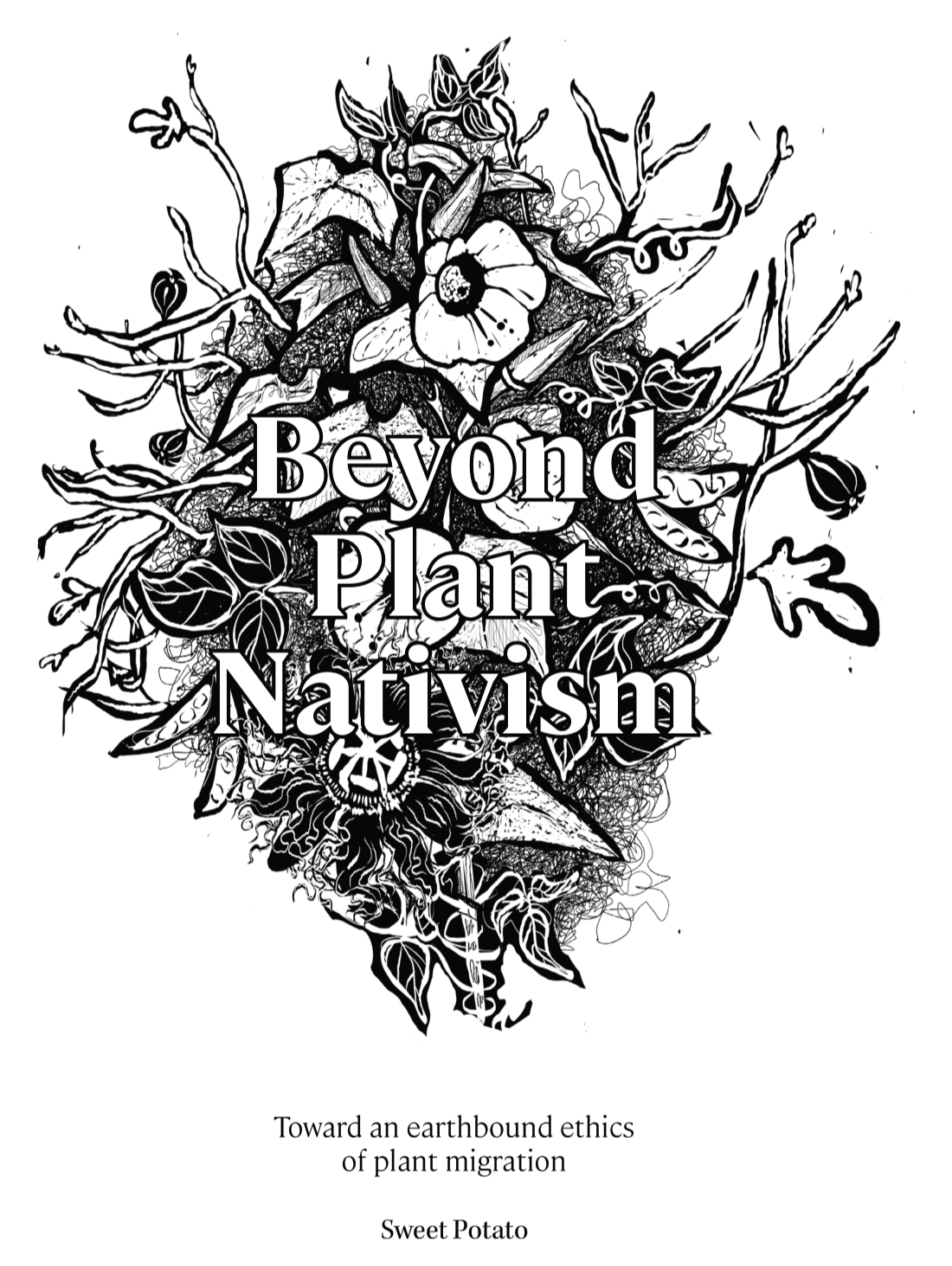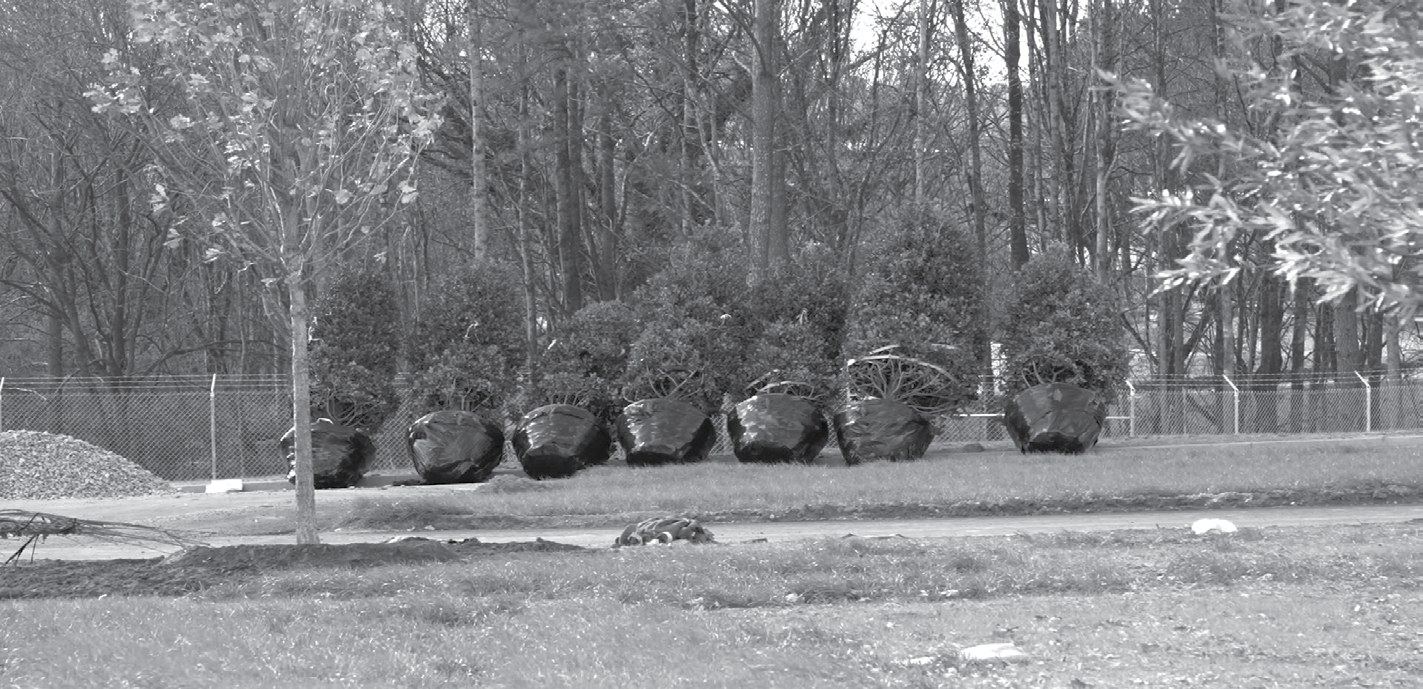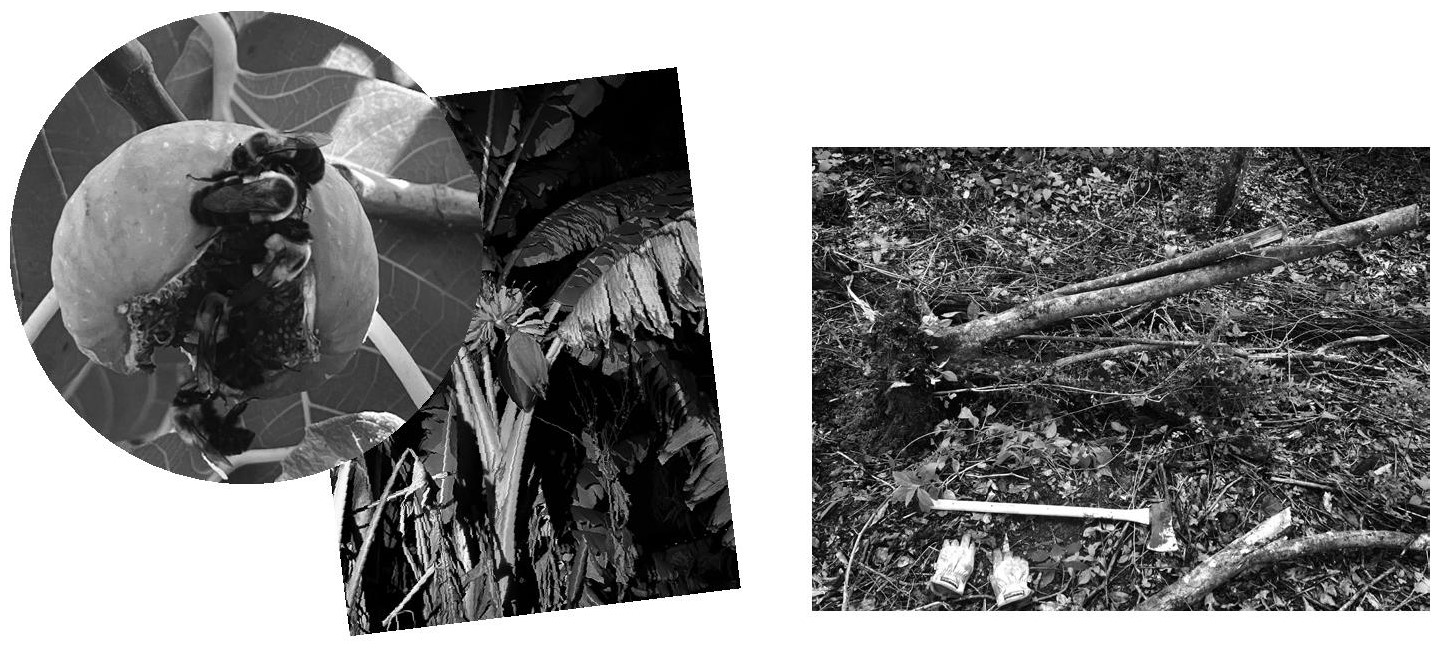Originally published in the 2024 Earthbound Farmer's Almanac. Hyperlinks to references have been added where possible.

“Everything is good for something. Creator do not make nothing bad.”
– Peggy Hemmingway, Anishnaabe traditional medicine teacher, discussing introduced plants ( from “Anishnaabe Aki: an indigenous perspective on the global threat of invasive species”)
Which plants we choose to cultivate, and those we choose to control or destroy in ecosystems we manage, is both an ethical and strategic question for which the stakes, in 2024, are extremely high. Plant nativism is the use of the framework of native/non-native as a primary lens through which to determine the value of a particular plant species in making decisions about its cultivation or eradication. I present seven challenges to this framework that demonstrate its limitations and inability to address ecological crises. Additionally I present some alternative frameworks for understanding and addressing invasiveness.
But first, a few things I am *not* saying:
1. Invasive species don’t cause problems, and should never be removed.
2. People shouldn’t propagate or protect native plants.
3. Non-native plants should be carelessly introduced to new ecosystems.
A note on definitions: I use the term “invasiveness” to simply mean a species that spreads rapidly either due to introduction to a new ecosystem or in opportunistic response to changes in its native ecosystem. Invasive species are sometimes specifically defined as causing harm, but this harm is inconsistently defined—either as negatively impacting biodiversity, harming native species or causing economic loss. The biodiversity criteria is most common but is often ignored in common usage. If you somehow remove all the non-native dandelions from your lawn, you haven’t increased biodiversity, you’ve reduced it. Ecosystems are not zero-sum games. The spatial metaphor of “filling” a niche contributes to this confusion, as if there are limited spots and you need to get in line early. In reality, habitat-creating species like trees and beavers, whether or not they’re native, construct niches for more species, some of whom construct yet more niches. There can also be unfilled niches which a newcomer can enter without displacing other species. This is especially true at the end of a long era of widespread habitat destruction and fragmentation by human infrastructure projects (in many cases these are the underlying problem of which invasive plants are only a symptom). We should learn from ecosystems’ own processes of healing after these disturbances, in which native and non-native early successional plants work together to return life to the wastelands, constructing niches and inviting the next phase of succession. Addressing the biodiversity crisis requires being open to the novel successional pathways and assemblages that arise through these collaborations.
Complications
1. Climate change is shifting zones of habitability for all sorts of species and changing every ecosystem on Earth. This will create “refugee species” whose habitable ranges shift entirely away from their historical ranges. Essentially every species will see a shift in their potential zones of habitation, which they could adapt to via natural migration if the timescale of the change wasn’t so drastic. The native/non-native framework cannot account for these changes and will result in increasingly incoherent responses if we insist on retaining it.
2. Migration. The history of life on Earth is one of constant movement. There are many examples of natural migrations causing ecological chaos, including both extinction and speciation, such as when tectonic activity pushed North and South America together about 10 million years ago. Big cats are thought to have been particularly disruptive upon their arrival in South America at this time. A framework which depends on static borders in order to assign value to participants in an ecosystem is thus at odds with the ever-changing nature of ecosystems. Simply put, every species was a newcomer to its home at some point. The lack of any clear metric for when or how a migratory species eventually becomes “native” shows the ultimate meaninglessness of these distinctions. The mango was first brought to Africa (as far as we know) in the ninth century AD. Is it native yet? Or forever non-native?
3. Humans vs. nature. The imagined separation of humans and nature is foundational to the framework of ecological nativism. Only migrations which aren’t caused by humans are considered “natural” and any species that is stained by human contact is labeled “non-native,” unnatural, worthy of destruction. This is the same perspective which displaces indigenous people to create “natural” preserves and which misunderstood precolonial ecosystems as being “wild” or “untouched.” This fundamentally anti-human framework must tie itself into knots to avoid being openly anti-indigenous.1 Either condemn every native people who’ve changed ecosystems by bringing plants or animals into new spaces—including Polynesians bringing pigs to new islands,2 the many peoples who spread corn from its beginnings in southern Mexico all the way to Argentina and Canada, and those who spread fruit and nut trees throughout the Amazon3 and Eastern North America— or arbitrarily decide that human-assisted migrations occurring before a certain point (1492, for example) were good but ones occurring after are bad. The latter perspective is probably the most prevalent in the U.S.—though it is probably more accurate to say that most plant nativists simply ignore pre-Colombian ecosystem changes by humans altogether.
4. Mutualism. Plant nativism tends to assume that a non-native plant will necessarily cause damage to other species while downplaying the possibility of mutually beneficial interactions. The tendency to emphasize competition and ignore cooperation is a perennial problem in masculinist western ecology. While it’s true that many symbiotic pairings like those of specialist pollinators and their host plants can take a long time to develop, these are far from the only examples of mutualism. Many of the mutually beneficial interactions plants have with other plants, animals and insects are nonspecific enough that wholly novel mutualisms occur spontaneously when a new plant joins an ecosystem. Birds in North America love to eat figs and other non-native fruits. Birds plant more non-native and hybrid mulberries than any human forest gardener could dream of, feasting on the fruits as readily as they do on native mulberries and spreading seeds that will feed future bird generations. Tree frogs the world over like to perch on banana leaves. As you read this, non-native trees are cycling carbon into the soil, exuding sugars which feed soil life, and providing shade and habitat for many creatures.
5. Food Autonomy. In order to overthrow the industrial food system before it collapses from its own contradictions and plunges us all into famine, we need to implement alternate systems which can actually feed ten billion people. It is hard to imagine how this would be possible if everyone’s diets were limited to whatever historically grew in their region,4 or even how such limitations could be enforced aside from naked authoritarianism.
6. Diaspora. What do we make of the efforts of various peoples, forced into migration by upheaval, catastrophe and direct violence, to bring with them some seeds, some living fragments of the place-based culture they’re leaving behind but also carrying with them? Strictly planting natives means rejecting Black diasporic crops like watermelon, okra and peanuts. If we criticize people for planting non-natives, we’re at odds with any immigrants who want to plant their own culturally significant crops and fruit trees.
 A few native landscaping trees ready to be planted at Cop City after 85+ acres were clearcut. Source: Atlanta Police Department Press Release, Dec. 2023
A few native landscaping trees ready to be planted at Cop City after 85+ acres were clearcut. Source: Atlanta Police Department Press Release, Dec. 2023
7. Devaluation. Advocates of plant nativism should be alarmed by how readily their framework is taken up by developers to justify ecocidal projects. For example, the City of Atlanta has repeatedly argued that it’s okay to destroy hundreds of acres of forest to build the controversial police training center known as Cop City, claiming that the land “is overwhelmingly dominated by invasive species like brush, weeds, vines and softwood trees” and going so far as to deny that it’s a forest at all. This devaluation of living beings is a common feature of ecological nativism, finding its most dramatic expression in government extermination programs such as the recent proposal by the US Fish & Wildlife Service to shoot 400,000 barred owls in Oregon to prevent competition with native owls (instead of addressing underlying causes of habitat destruction impacting both species).5 Backyard plant nativists also engage in this devaluation, killing non-natives not just carelessly but often gleefully, uncritically, based only on the shallow category of nativeness rather than careful analysis of a plant’s actual activity in an ecosystem. Those who believe in the sanctity of non-human life should be wary of potentially far-reaching consequences of this mode of ecological engagement.

These ideas are strongly influenced by various indigenous thinkers and land stewards. I emphasize this not as an appeal to authority, or to suggest that all indigenous people share this perspective, but simply because the strongest arguments have been put forward by indigenous people. For the purposes of this article, it’s worth quoting at length a study conducted by and with Anishnaabe tradition bearers in so-called Michigan, USA:
“Though there are no beliefs held in common among all indigenous people, it is a commonly held belief among many indigenous groups around the world that plants, animals and other beings are members of the extended family... We initiated our ethnographic project to understand how a group of people with such a ‘kincentric’ worldview make sense of introduced and ‘invasive’ species.”
The study’s authors distilled their findings into three main points:
“For Anishnaabe, plants and animals are family members and respected as elder siblings to humans. Anishnaabe regard plants, like all beings, as persons that assemble into nations more so than ‘species.’ The arrival of new plant nations is viewed by some Anishnaabe as a natural form of migration. Plants and animals move across the landscape, and mobility is not inherently good or bad, regardless of precipitating cause.
“Humans have an obligation to figure out the nature of our relationship with new arrivals, which includes careful consideration of their potential gifts and our reciprocal responsibilities. It is the responsibility of humans to determine the reason why new plants or animals have arrived in their territories, and actively determine the nature of
novel human–animal or human–plant relationships. When the purpose of new plants is not obvious, Anishnaabe plant specialists will turn to animals to help them understand how to interact with new species. Ethical obligations to discover a new arrival’s proper use requires specific attention to the possibility of mutual benefit.”
“While Anishnaabe describe invasive species as phenomenologically entangled with colonialism, the multiple ways Anishnaabe people think about invasive species provide alternatives to native-non-native binaries that dominate much of the scientific discourse. We found that Anishnaabe tradition bearers are more concerned about an ‘invasive land ethic’ than the threats of invasive species. Elements of this invasive land ethic include the imposition of Euro-American property ownership regimes, ‘command and control’ forms of environmental management, and a worldview predicated on the separation of people from nature. Our interlocutors described the ways this invasive land ethic manifests in non-indigenous governmental and NGO approaches to invasive species management.”6

Toward an earthbound ethics of plant migration
We need alternative frameworks for understanding the role of migrating species in the ecosystems we inhabit and the gardens we tend. This begins with affirming the sacredness of all life on Earth, our familial connection to all branches of the tree of life, and our deep ethical obligations to all these relatives. The values of solidarity, mutual aid and freedom of movement should be extended to all beings. In this catastrophic era, our task is not to resurrect an ancient ecosystem nor to “design” the ecosystems of the next century, but rather to support both endemic and migratory species as they adopt their own strategies for navigating climate change. The thriving ecosystems of this century will be complex communities including migrating plants and endemic plants, each evolving to meet an ever-changing situation that includes human habitation.
When an introduced species does need to be managed, we should avoid bureaucratic and state-led interventions which rely on professionalized labor and are essentially militaristic in their approach. The solution to this and many other ecological problems is inhabitation—as more people come into reciprocal relationship with their ecosystems, we will be better positioned to heal the Earth and foster coexistence between native and migratory species.
-
This claim may be surprising to many native plant advocates, who see themselves as allies to native people or opponents of colonization. In the absence of actual relationships of solidarity with native people, there is reason to be skeptical of this self-image. In fact, the odd conflation between native plants and native people common in these circles bears a certain resemblance to xenophobic World War II era cartoons and newspaper articles that depicted Japanese people as invasive Japanese Beetles and other insects (see, e.g., Biotic borders: Transpacific Plant and Insect Migration and the Rise of Anti-Asian Racism in America, 1890–1950 by Jeannie N. Shinozuka). While it is often presented in a self-effacing way by white people, the similar conflation of European colonizers and the plants they introduced mostly serves to displace settler guilt onto innocent plants, with eradication of non-native plants becoming a way to morally cleanse oneself. ↩
-
Horsburgh, K. A., Gosling, A. L., Cochrane, E. E., Kirch, P. V., Swift, J. A., & McCoy, M. D. (2022). Origins of Polynesian pigs revealed by mitochondrial whole genome ancient DNA. Animals, 12(18), 2469. ↩
-
Maezumi, S.Y., Alves, D., Robinson, M. et al. The legacy of 4,500 years of polyculture agroforestry in the eastern Amazon. Nature Plants 4, 540–547 (2018). ↩
-
The typical plant nativist response is that indigenous people did survive on native crops, sometimes at considerable population densities. Setting aside plants which were modified by ancient people and introduced to wider ranges, this is basically true, but the damage done since then by habitat destruction, reduction in prey animal populations, disease and now climate change cannot be hand-waved away. Despite the massive depopulation of American chestnut trees due to blight, for example, many plant nativists oppose the planting of blight resistant non-native hybrid chestnuts which could fill this empty niche and feed millions. ↩
-
Wing, S. V. (2023, December 7). USFWS proposes shooting barred owls to save spotted owls. Oregon Public Broadcasting. https://www.opb.org/article/2023/11/30/barred-spotted-owl-shoot ↩
-
Reo, N.J., Ogden, L.A. Anishnaabe Aki: an indigenous perspective on the global threat of invasive species. Sustain Sci 13, 1443–1452 (2018). ↩